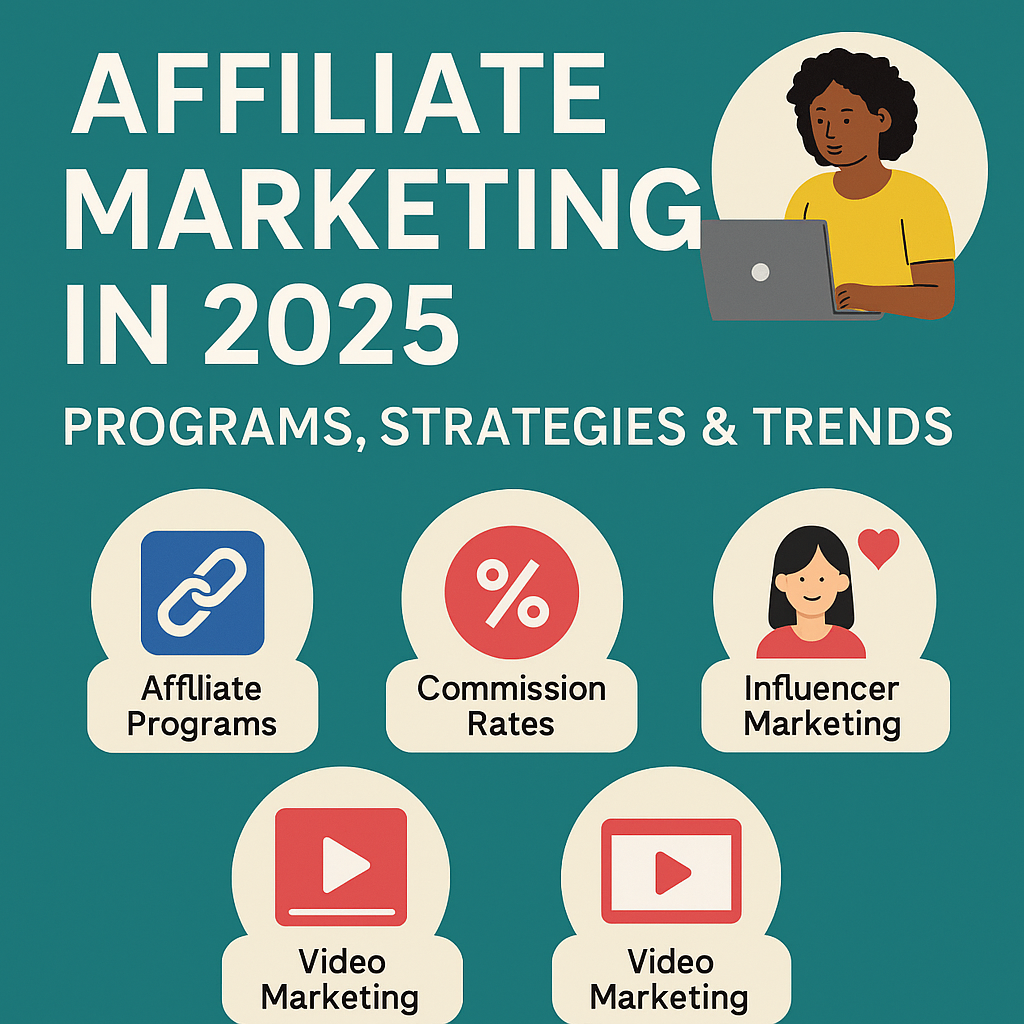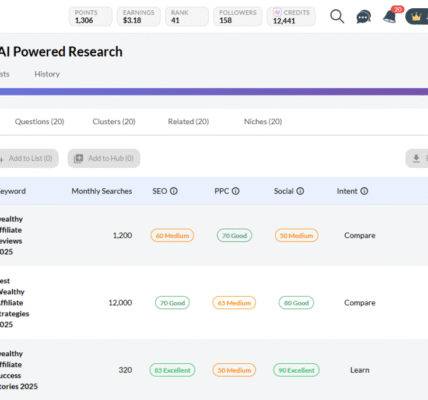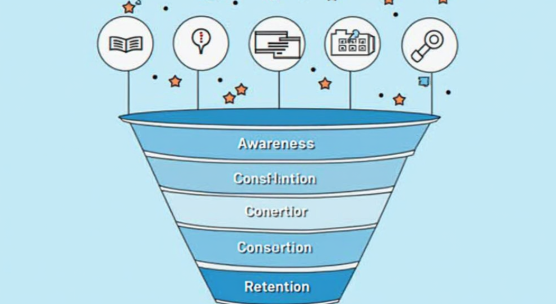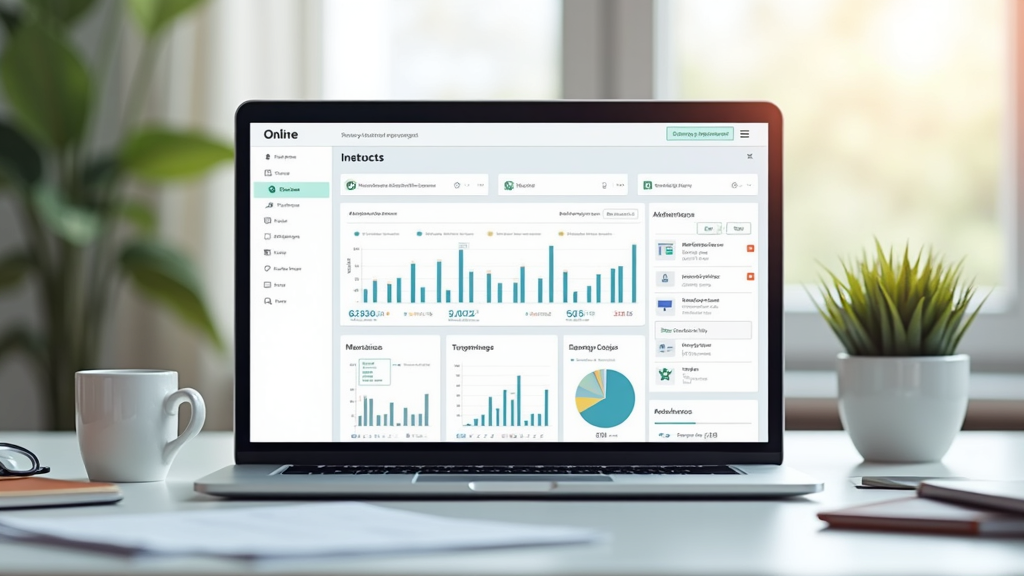Affiliate marketing in 2025 continues to be one of the most accessible and profitable ways to earn online, whether you’re a beginner just starting out or an experienced creator looking to diversify income. The landscape has shifted dramatically in the last few years, moving away from static banner ads and text-heavy blogs to a dynamic mix of social commerce, influencer partnerships, and AI-powered tools. These changes have not only expanded the opportunities available but also introduced new challenges in standing out and staying competitive.
At Affili Boost Bucks, my goal is to make sense of these evolving trends and guide you toward strategies that actually work in today’s fast-paced environment. From choosing the right affiliate program to leveraging TikTok Shop, YouTube Shorts, or AI research platforms, I’ll break down the latest tools and techniques you can use to scale your online business. This guide isn’t theory—it’s a practical roadmap built on current industry insights and hands-on experience with real programs and platforms.
By the end of this pillar post, you’ll know which affiliate marketing programs are worth your time, how to understand commission structures, and the best ways to integrate content, video, social platforms, and AI into your workflow. More importantly, you’ll see how beginners and seasoned affiliates alike can take advantage of the growing digital economy. Let’s dive into what affiliate marketing looks like right now—and where it’s heading next.
What Is Affiliate Marketing in 2025?
Affiliate marketing remains a simple but powerful concept: you promote a product or service, and you earn a commission when someone makes a purchase through your referral. In 2025, however, the channels and methods of reaching audiences have diversified beyond imagination. What once meant starting a niche blog now also includes creating short-form videos, managing influencer storefronts, and participating in live-streamed shopping experiences. These changes have opened the door for more creativity while raising the bar for professionalism.
The rise of AI and automation has also altered the way affiliates work behind the scenes. Tools now make it possible to research keywords, generate content drafts, and even optimize ad campaigns with a fraction of the time it once took. This doesn’t mean success is guaranteed—audiences are smarter, and authenticity matters more than ever—but it does mean you have more leverage at your fingertips. Affiliates who adapt to these tools are finding themselves able to compete with bigger players in ways that were once impossible.
Despite these innovations, the fundamentals of affiliate marketing remain unchanged: trust, relevance, and value. Your job is still to match the right product with the right audience at the right time, whether that’s through a blog post, a YouTube tutorial, or a TikTok review. In many ways, 2025 has only reinforced the original principle that people buy from people they trust. The platforms have evolved, but the human connection at the core of affiliate marketing is what continues to drive results.
The Best Affiliate Marketing Programs in 2025
Affiliate programs are the backbone of this business model, and in 2025, the range of options has never been broader. Amazon Associates remains a reliable starting point for beginners, while platforms like Awin, CJ Affiliate, and ShareASale offer extensive catalogs of global brands. For digital products, ClickBank and Digistore24 still dominate, providing high-percentage commissions and recurring revenue opportunities. And of course, Wealthy Affiliate continues to stand out by combining education, hosting, and an affiliate program into one ecosystem.
Choosing the right program depends heavily on your niche, audience, and goals. If you run a home décor blog, partnering with Wayfair or Etsy makes sense, while tech reviewers may lean toward software affiliate networks. For those focused on passive income, SaaS programs offering recurring monthly commissions can be particularly attractive. The trick is to balance ease of use with commission potential, ensuring you’re not just chasing high rates but actually matching your audience’s needs.
It’s also worth noting that many companies are creating in-house affiliate programs outside of big networks. This shift gives brands more control but requires affiliates to do extra research when applying. For you, this means a mix of strategy—joining major networks for variety while also exploring niche-specific programs for higher payouts. If you want a detailed breakdown, check out my Wealthy Affiliate Review 2025—Is It Worth It?
Understanding Affiliate Commission Rates
Commissions are the heartbeat of affiliate marketing, and in 2025, they vary more widely than ever. Physical goods like Amazon products often pay as little as 1–3%, which requires high traffic but delivers credibility and trust. Digital products and online courses, on the other hand, can pay anywhere from 30% to 75%, offering much larger margins for each sale. Subscription-based programs, such as SaaS tools, add another layer with recurring monthly payouts.
Understanding how these rates work helps you make smarter program choices. Flat-fee commissions may seem attractive if you’re promoting high-ticket items like luxury services, while recurring commissions make sense for steady, predictable growth. For example, promoting a $99/month software that pays 30% could provide consistent income over time with just a handful of sign-ups. As you weigh programs, consider not just the percentage but the long-term revenue potential.
It’s also important to remember that commissions alone don’t guarantee success. A 75% payout from a low-quality product can hurt your credibility and future earnings if customers feel misled. Focus on programs that balance fair commissions with quality products, aligning with your personal brand and audience values. This approach ensures that both your earnings and your reputation grow together.
Influencer Marketing & Creator Platforms
Influencer marketing has fully merged with affiliate strategies in 2025, creating new opportunities for both creators and brands. Platforms like ShopMy and TikTok Shop now allow influencers to create curated storefronts, turning casual recommendations into structured affiliate sales channels. This shift empowers affiliates who have built communities around lifestyle, beauty, travel, or tech to directly monetize the trust they’ve established. For brands, it means access to highly targeted audiences without traditional advertising overhead.
The appeal of influencer-driven affiliate marketing lies in its authenticity. Audiences are more likely to trust someone they follow than a faceless advertisement. When influencers embed affiliate links into their shopping recommendations, it feels less like a sales pitch and more like a personal suggestion. For affiliates, this makes influencer marketing one of the most natural fits for modern promotions.
As these platforms grow, AI tools are also stepping in to enhance discoverability. ShopMy, for example, uses AI-powered “circles” to help shoppers find curated product collections based on trusted creators. This trend suggests a future where affiliate marketing becomes less about cold pitches and more about embedded recommendations within communities. The takeaway: if you’re not experimenting with influencer-style content, you’re leaving significant opportunities on the table.
Content Creation That Converts
Content remains the foundation of affiliate success, even in 2025. The difference now is that affiliates have more content formats to choose from: blog posts, YouTube tutorials, TikTok reviews, Instagram carousels, and even live Q&A sessions. Each format has its strengths, and the smartest affiliates are mixing formats to reach audiences across multiple touchpoints. The core principle, however, remains unchanged—create content that solves problems, entertains, or educates while seamlessly integrating affiliate links.
When deciding what to create, think beyond traditional product reviews. Comparison posts, tutorials, and “best-of” roundups remain effective, but newer angles like storytelling and behind-the-scenes looks resonate even more with today’s audiences. For example, sharing your personal journey of using a product builds trust that a generic review can’t achieve. This kind of authenticity is what convinces readers and viewers to take action.
Another important consideration is consistency. Audiences and algorithms reward creators who show up regularly, whether that’s weekly blog posts, daily Instagram stories, or monthly YouTube deep dives. Consistency signals professionalism and helps build momentum in search rankings. For inspiration, read my post on How To Structure Your Amazon Review For Maximum Impact.
Video Marketing as the New Frontier
Video has become the fastest-growing medium for affiliate marketers, with TikTok, YouTube Shorts, and Instagram Reels dominating consumer attention. Audiences are consuming more short-form content than ever before, making video a natural place for product discovery. For affiliates, this shift means thinking less like bloggers and more like storytellers who can engage in under 60 seconds. The potential reach of video-first platforms is too great to ignore in 2025.
Live shopping is another frontier that blends entertainment with instant purchasing. Platforms like TikTok Shop and Amazon Live are making it easier for affiliates to host product demos, answer questions in real-time, and drive sales directly during broadcasts. This interactivity creates a sense of urgency and connection that static blog posts can’t replicate. Affiliates who adopt these formats early will likely gain a competitive advantage.
Still, video content doesn’t have to replace traditional formats—it should complement them. Embedding YouTube reviews in blog posts or linking to TikTok tutorials from Pinterest can create a multi-channel ecosystem. The more touchpoints you create, the stronger your authority and the more likely you are to capture conversions. Video is no longer optional; it’s an essential layer in your affiliate marketing strategy.
The Rise of Social Commerce
Social commerce has grown into a global force in 2025, with platforms like TikTok Shop, Instagram Shopping, and Pinterest driving billions in sales. For affiliates, this means products can now be promoted directly within the apps where audiences already spend time. Instead of leading users off-platform to a blog or website, you can monetize their attention instantly. This seamless integration of discovery and purchase is transforming affiliate marketing.
What makes social commerce so powerful is its reliance on community-driven trust. When someone sees a friend, influencer, or micro-creator recommending a product, the purchase feels more personal and immediate. The lines between social proof, entertainment, and shopping have blurred into a single experience. For affiliates, this is both exciting and challenging—it requires creative content that doesn’t feel like a hard sell.
The good news is that platforms are building more tools to support affiliates. TikTok’s affiliate program, Instagram’s checkout, and Pinterest’s product tagging is all designed to reward creators with sales opportunities. These tools reduce friction and make affiliate marketing more accessible, even for beginners with small followings. The future of affiliate sales is clearly moving closer to where people socialize online.
Affiliate Networks vs In-House Programs
One of the most common questions in affiliate marketing is whether to join large networks or apply directly to in-house programs. Networks like CJ Affiliate, ShareASale, and Awin offer the benefit of variety, giving affiliates access to thousands of brands in one dashboard. In-house programs, on the other hand, often provide higher commission rates, direct support, and niche focus. Both options have their strengths and weaknesses in 2025.
For beginners, networks tend to be the easiest starting point. They streamline applications, consolidate reporting, and offer a wide range of industries to experiment with. This allows new affiliates to test different niches without juggling multiple logins and contracts. The trade-off, however, can be lower commission rates and less personalized support.
In-house programs are usually a better fit for advanced affiliates with established niches. These programs often prioritize affiliates with proven traffic, offering exclusive deals and higher payouts. The downside is the need to apply individually and manage relationships with multiple brands. For more detail, read my comparison post ClickBank vs Digistore24: Which Affiliate Network Is Better in 2025?
AI Tools in Affiliate Marketing
Artificial intelligence has quickly become a game-changer for affiliate marketers in 2025. Tools like Jasper, ChatGPT, and RightBlogger can help generate blog drafts, product descriptions, and social captions in minutes. AI-driven SEO platforms like SurferSEO and Jaaxy make keyword research more precise, saving time and boosting ranking potential. For affiliates, this means being able to scale content production without sacrificing quality.
Beyond writing, AI is reshaping analytics and personalization. Platforms can now analyze customer behavior and suggest affiliate offers most likely to convert. Some tools even automate A/B testing for landing pages and email campaigns, giving affiliates insights that once required teams of marketers. This shift is leveling the playing field, making advanced marketing tactics accessible to solo entrepreneurs.
That said, AI works best as a supplement, not a replacement. Authenticity and human perspective remain vital, especially in niches where trust drives conversions. Affiliates who blend AI efficiency with personal storytelling will stand out in a crowded market. Dive deeper with my AI for Bloggers: The Complete Guide.
SEO Traffic Still Matters in 2025
Despite the rise of social platforms, SEO remains a cornerstone of affiliate marketing. Google and Bing continue to reward well-structured, valuable content that answers user intent. Long-tail keywords, topical clusters, and strategic internal linking are still essential for building authority. For affiliates, SEO offers a steady stream of organic traffic that compounds over time.
The strategies, however, have evolved. Keyword stuffing and thin content no longer work, and search engines penalize sites that prioritize quantity over quality. Instead, affiliates must focus on in-depth guides, comparison reviews, and content that demonstrates real expertise. This aligns perfectly with affiliate goals, as detailed posts often convert better than superficial ones.
SEO also integrates seamlessly with other strategies. Embedding YouTube videos, adding Pinterest graphics, or linking to TikTok clips can strengthen search rankings while building a multi-channel presence. In 2025, the affiliates seeing the best results are those who combine SEO with video, social commerce, and influencer strategies. For a step-by-step SEO foundation, check out my post How To Research And Identify Profitable Niches On Amazon.
Affiliate Marketing for Beginners
For newcomers, affiliate marketing in 2025 can feel overwhelming with so many platforms, tools, and trends to choose from. The key is to start simple: pick a niche you care about, join one or two beginner-friendly programs, and create consistent content. Don’t worry about being everywhere at once—focus on building authority in one channel first. Over time, you can expand into video, social commerce, or advanced SEO.
A basic roadmap looks like this: choose a niche → register a website → join an affiliate program → create helpful content → promote it consistently. Wealthy Affiliate remains one of the easiest places to begin because it combines training, hosting, and community support in one platform. Beginners don’t need to piece together multiple tools—they can learn while building. This reduces the learning curve and increases the chance of early success.
It’s equally important to avoid common mistakes. Chasing every new program or trend can lead to burnout and scattered results. Focus on building trust with your audience and aligning your promotions with their actual needs.
Future Trends to Watch
Looking ahead, affiliate marketing will continue to merge with other forms of digital commerce. Creator storefronts powered by AI are likely to become the norm, giving affiliates personalized shops where customers can browse curated recommendations. Social platforms will further integrate purchasing features, making checkout smoother and faster. Affiliates who adapt early to these ecosystems will secure long-term advantages.
Another trend is the globalization of affiliate marketing. Markets in India, Southeast Asia, and Latin America are growing rapidly, offering affiliates new audiences and untapped niches. As more brands expand internationally, affiliates will have access to wider opportunities. This globalization also increases competition, but those who localize content and understand cultural nuances will thrive.
Finally, expect regulations and transparency standards to increase. Governments and platforms are paying closer attention to how affiliate promotions are disclosed. Affiliates who prioritize ethical marketing and clear communication will not only stay compliant but also build stronger trust with audiences. The future is bright, but it belongs to those willing to evolve.
Conclusion
Affiliate marketing in 2025 is more exciting and dynamic than ever, offering countless ways to earn online. From evergreen SEO strategies to cutting-edge influencer platforms, the opportunities are abundant for anyone willing to put in the work. By focusing on programs that fit your niche, creating authentic content, and leveraging AI and social commerce, you can build a sustainable business that grows year after year.
The key is to balance old and new—using proven methods like SEO alongside emerging strategies like live shopping and AI analytics. This hybrid approach ensures you’re not dependent on a single channel and keeps your affiliate business resilient to change. Remember, the fundamentals of trust and value remain as true today as they were when affiliate marketing first began.
If you’re ready to start your journey, now is the perfect time. Check out my [Wealthy Affiliate Review 2025—Is It Worth It?] and take the first step toward building your own affiliate income stream. Affiliate marketing isn’t just about sales—it’s about creating freedom, flexibility, and opportunities that last.




